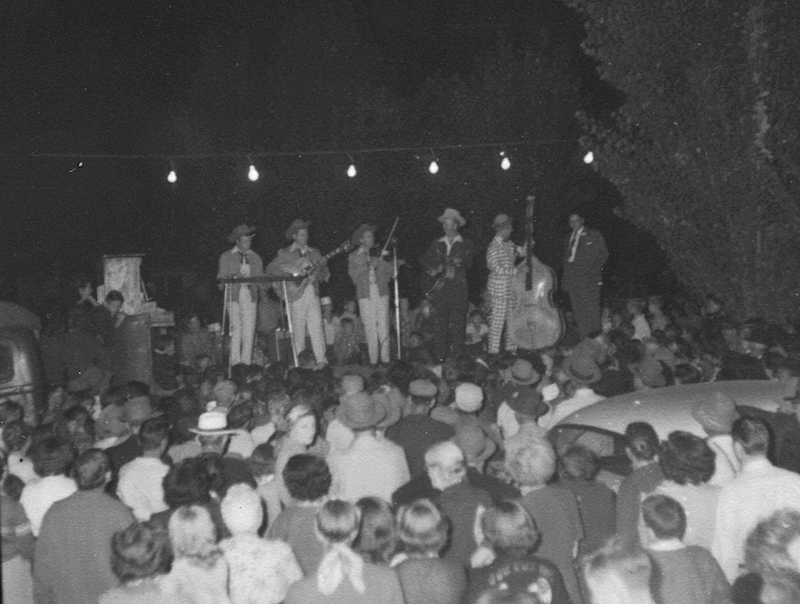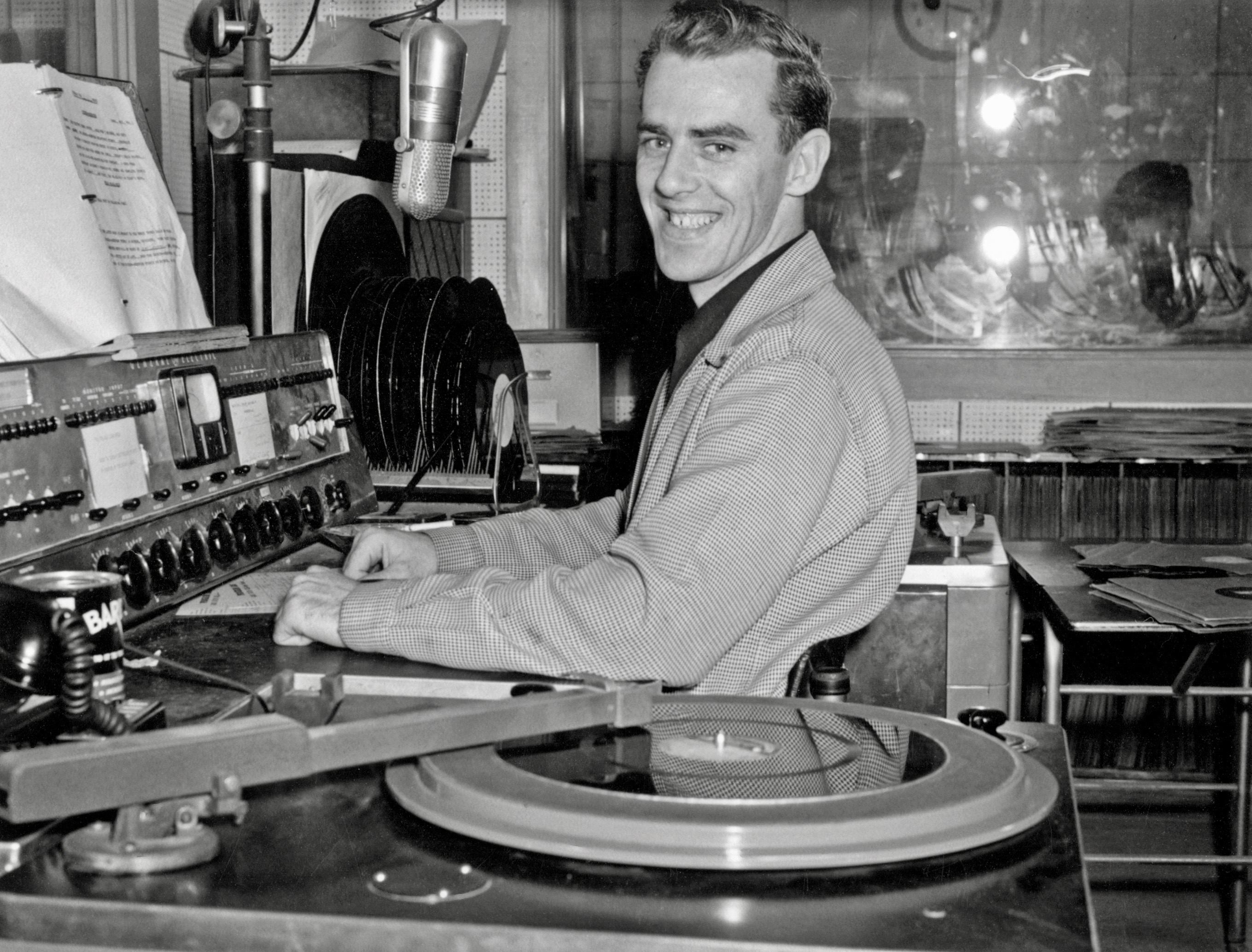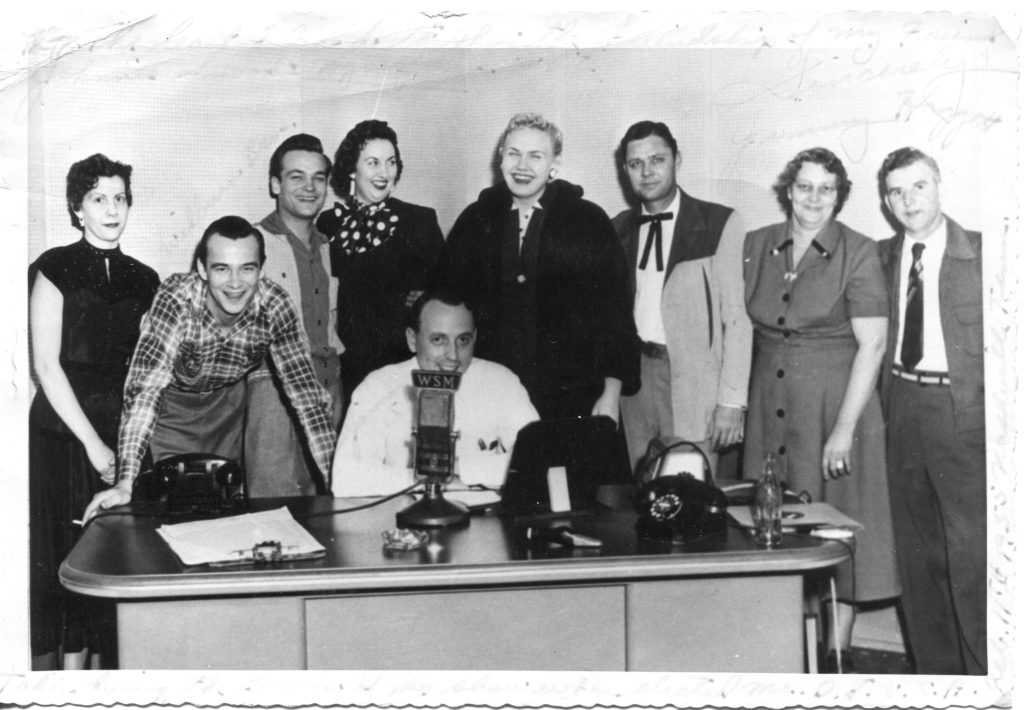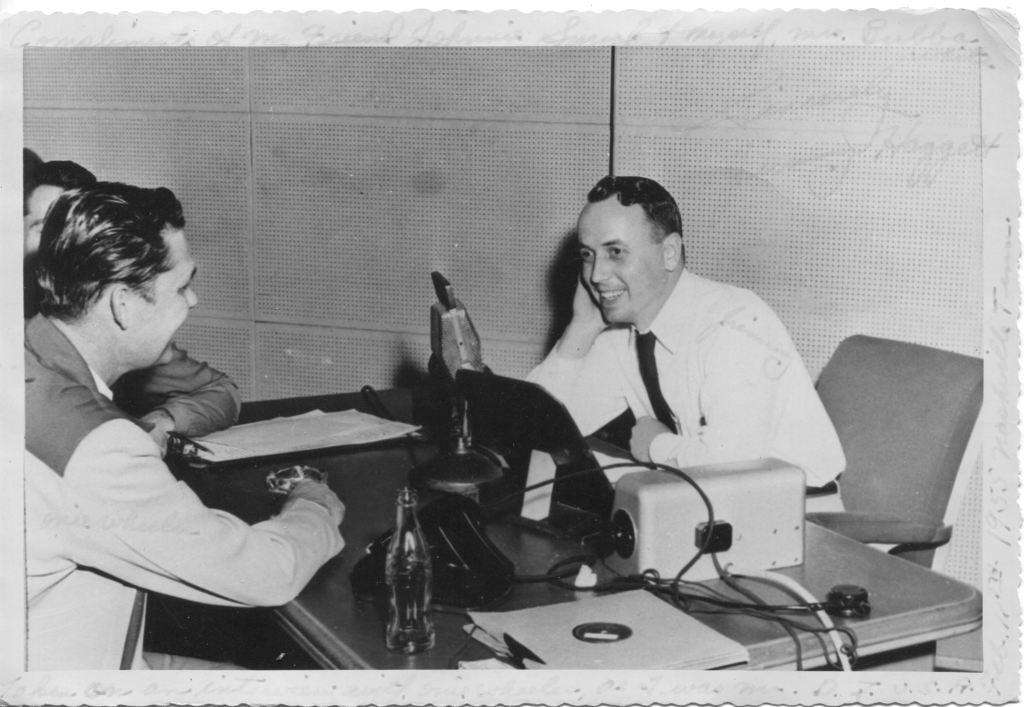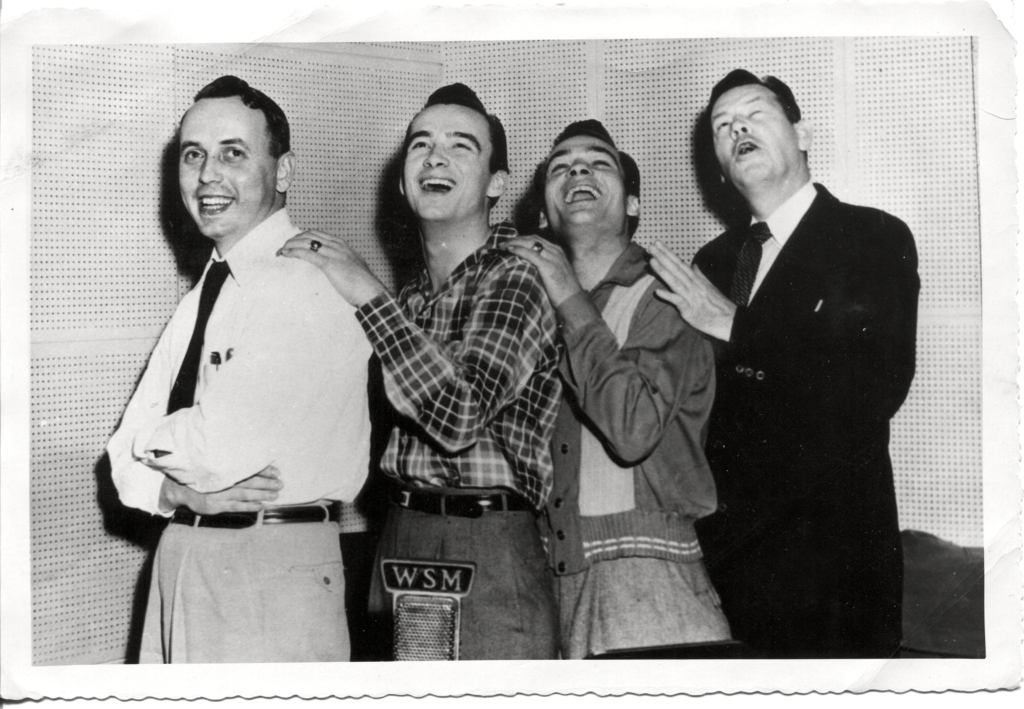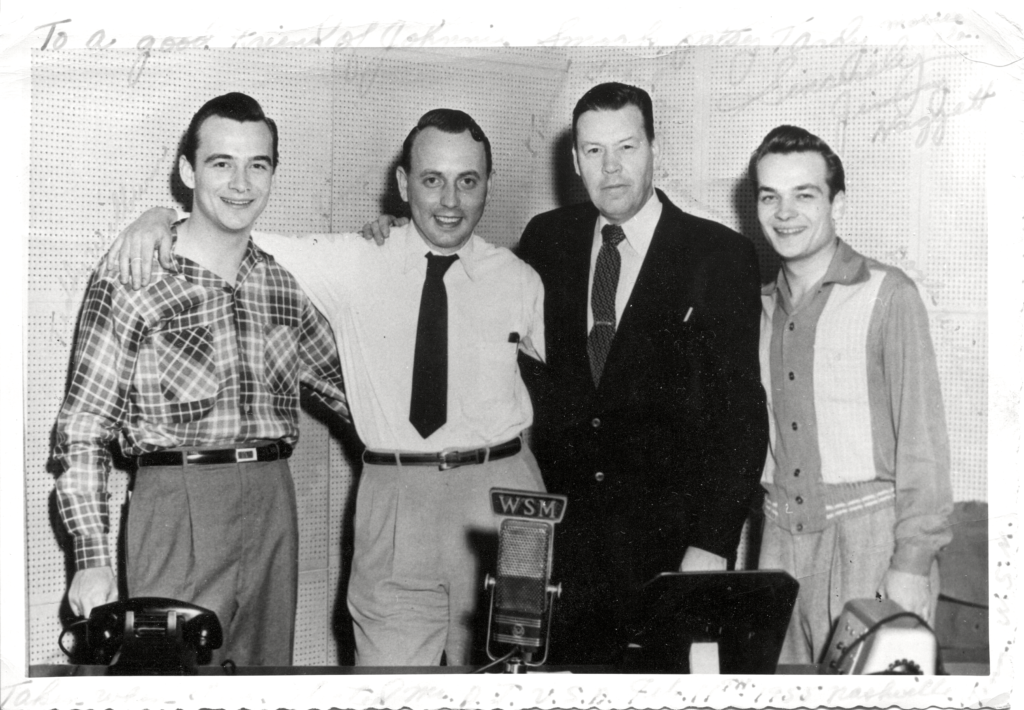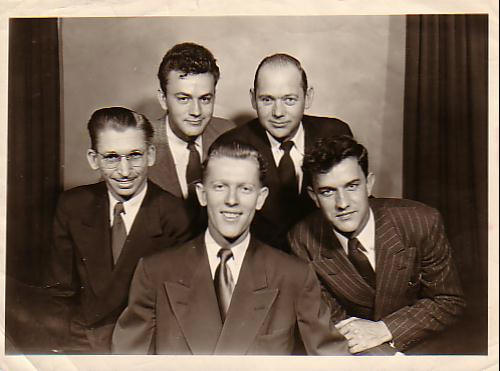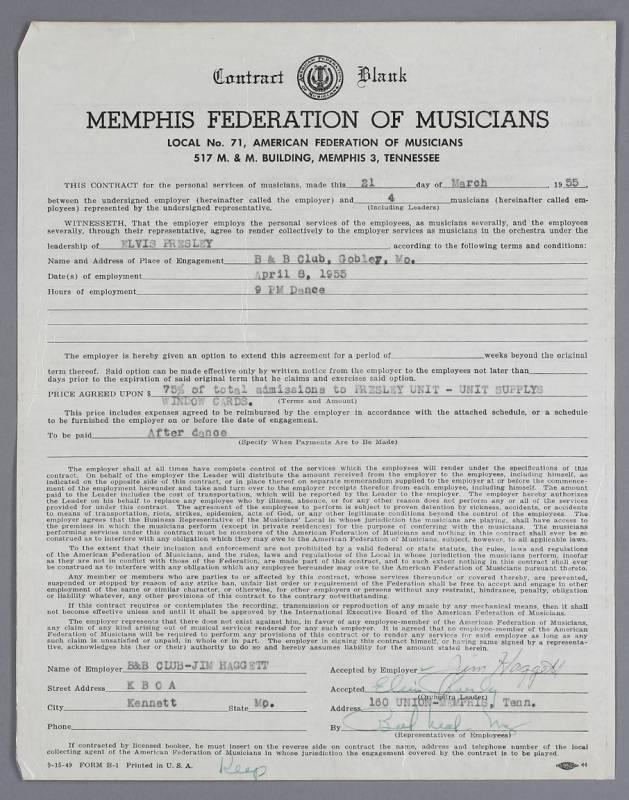The photo above was probably taken sometime around 1950. No idea about the location but almost certainly one of the many promotional appearances KBOA put on in the early days. The performers are Chuck Harding and the Colorado Cowhands with a guest appearance by Speck Rhodes (checked suit). Rhodes was a country music comedian and entertainer best known for his appearances on the Porter Wagoner television show. The stage is the flat bed of some kind of truck.
I love everything about this photo (probably taken by John Reeder, a station employee): the kids crouched behind the piano; the string of lights. But the crowd is the best. Packed shoulder to shoulder, standing room only (no chairs). An event like this one is probably as close as these folks ever got to a “concert.” They would have heard Chuck and the boys from their countless live performances on KBOA and a chance to see them in person was a big deal. Few if any TVs at the time.

